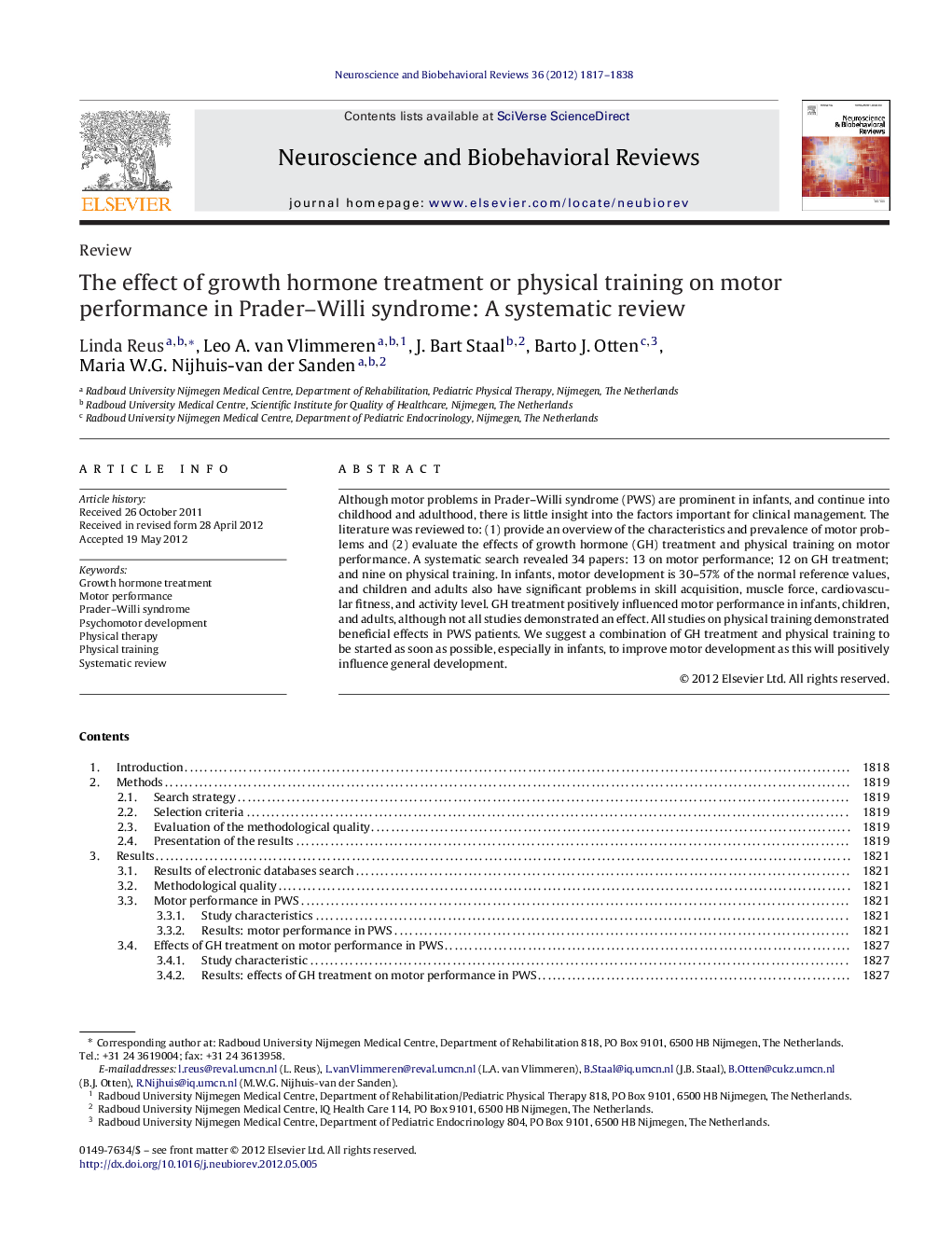| کد مقاله | کد نشریه | سال انتشار | مقاله انگلیسی | نسخه تمام متن |
|---|---|---|---|---|
| 937505 | 924502 | 2012 | 22 صفحه PDF | دانلود رایگان |

Although motor problems in Prader–Willi syndrome (PWS) are prominent in infants, and continue into childhood and adulthood, there is little insight into the factors important for clinical management. The literature was reviewed to: (1) provide an overview of the characteristics and prevalence of motor problems and (2) evaluate the effects of growth hormone (GH) treatment and physical training on motor performance. A systematic search revealed 34 papers: 13 on motor performance; 12 on GH treatment; and nine on physical training. In infants, motor development is 30–57% of the normal reference values, and children and adults also have significant problems in skill acquisition, muscle force, cardiovascular fitness, and activity level. GH treatment positively influenced motor performance in infants, children, and adults, although not all studies demonstrated an effect. All studies on physical training demonstrated beneficial effects in PWS patients. We suggest a combination of GH treatment and physical training to be started as soon as possible, especially in infants, to improve motor development as this will positively influence general development.
► Motor performance is seriously affected in PWS infants, children, and even adults.
► GH treatment improves motor development in young infants.
► GH treatment improves muscle force and fitness in children.
► Physical training is effective in PWS patients on physical fitness and weight reduction.
► Surprisingly, no physical training programs for infants are available.
Journal: Neuroscience & Biobehavioral Reviews - Volume 36, Issue 8, September 2012, Pages 1817–1838